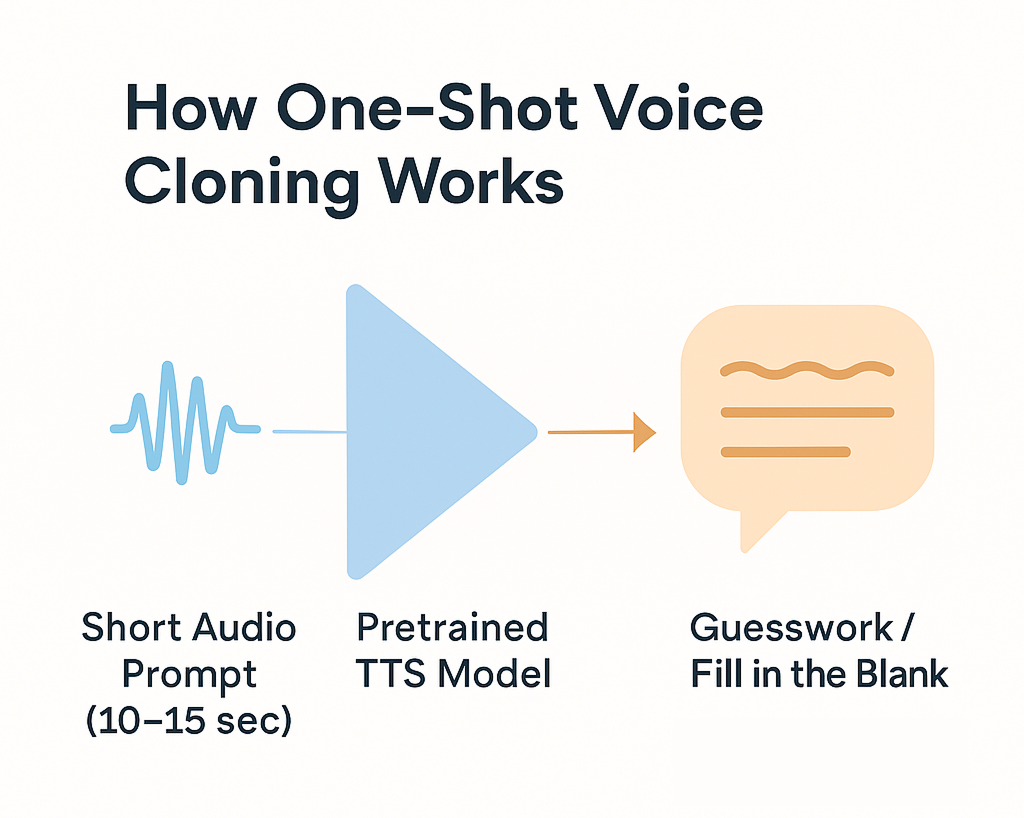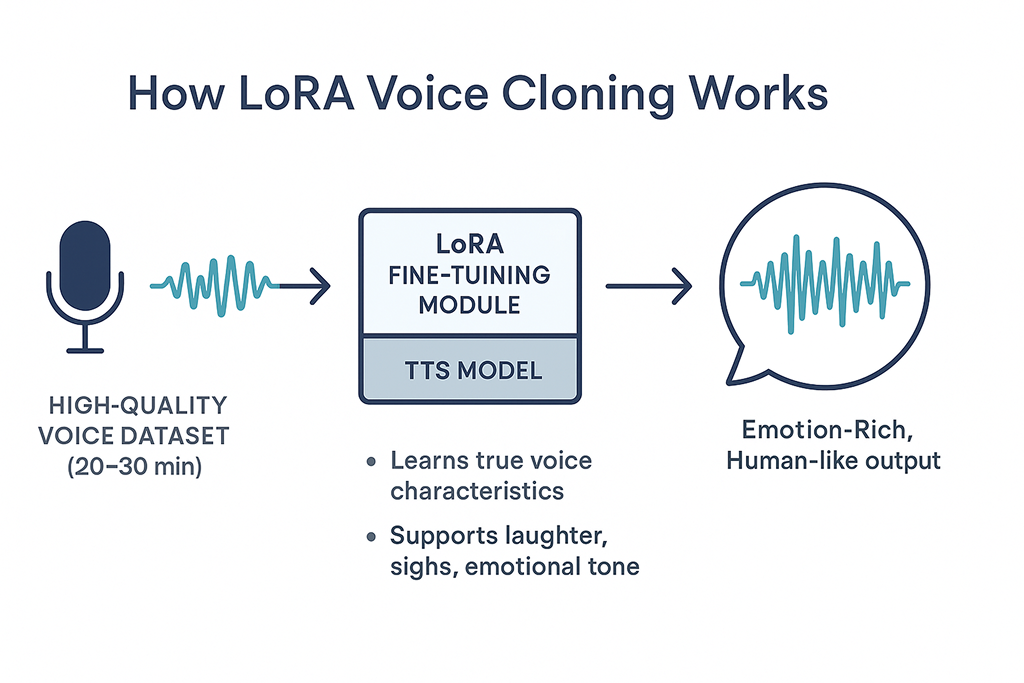Voice cloning technology has made huge strides over the last few years. What used to sound vaguely human now sounds indiscnerable at times from the source material.
But the "at times" is the story here. I work with customers weekly who have tried cloning a voice using the popular 15-60 seconds approach only to have it sound like ~30% of the actual voice. If you squint your ears (I know that's not a thing but let me have this), it sounds vaguely similar, but that's not immersion! For any AI that's supposed to interact with humans in a hopefully immersive way, it quickly converges on the uncanny valley, and that quickly becomes unsettling.
So whether you're building immersive characters in games, lifelike AI companions, dynamic customer support agents, or storytelling bots, I'm here to ruin your opinion of the "voice" clones of today and redpill you on the need for premium voice clones.
"Cloning" Isn't Cloning
The subtlety of emotion, the cadence of speech, the ability to sigh, laugh, or whisper — these small human-like qualities are what create trust and immersion.
But not all cloning approaches get you there.
In today's landscape, there are really two dominant categories of voice cloning:
- One-shot cloning: Fast, cheap, but rigid and extremely narrow.
- High-fidelity (HD) or Premium cloning: Slower to generate, but vastly more expressive and immersive.
In this post, me and ChatGPT will break down how these techniques differ, why they matter, and how different providers stack up in terms of pricing and quality.
One-Shot Cloning: The Shortcut with Limits
One-shot cloning is often advertised as "just give us 10–15 seconds of audio and we'll clone the voice." Sounds magical, right?

It's magic if you've never cloned before, but it's awful when you go to production. It sounds the same no matter what it's saying. "That's a cute dog" and "I'm sorry but it's terminal" sound identical, and, well, they shouldn't.
Here's how it works behind the curtain: the model uses a short audio snippet (usually a sentence or two) as a prompt. It doesn't truly learn the voice. It's doing something closer to voice style transfer. The model hears the prompt and then tries to guess how the speaker would say the next lines given the provided audio.
It's literally taking the 20-30 syllables provided and mapping them to whatever text you feed in.
As you can imagine, in 20 seconds you can't get much range, and if you try to provide range in your sample, you're going to end up geting a mess of intonations.
It's fast and convenient, and can work reasonably well when:
- The target voice is already well represented in the training dataset (e.g., celebrities, influencers, common accents).
- The use case doesn't demand high emotional range (e.g., reading news headlines).
But one-shot clones fall short when:
- You need emotive delivery — like whispering, crying, yelling, or joking.
- The voice isn't in the base dataset.
- You want immersive character work that holds up over long form content.
And for persona-driven use cases — where the AI is meant to connect emotionally with an end user — one-shot clones are a dead giveaway. They break the illusion and destroy immersion. Users can immediately sense the flatness, generic tone, and lack of real character. The spell is broken.
Ultimately, it's a shortcut. You're not cloning a voice — you're using a short prompt to fake it.
Premium Cloning: The Real Deal
True premium cloning takes a different approach. It builds a custom LoRA finetune (or equivalent adapter) on top of a foundational TTS model. The training process actually teaches the model to speak like the voice in the dataset.
It captures:
- Voice timbre and tonality
- Cadence and speech rhythm
- Pronunciation quirks and style
- Emotional ranges — from laughing to whispering
At Gabber, this is exactly what our own in-house voice cloning model does. We train custom LoRA adapters using 20–30 minutes of high-quality audio. The result is a lightweight, high-fidelity clone that sounds indistinguishable from the original speaker — whether delivering heartfelt monologues, laughing through banter, or whispering secrets.
This process takes more time and effort, but the difference is night and day:
- Clones can laugh, cry, whisper, and sing.
- They sound human, not uncanny.
- They're consistent across sessions and contexts.
- They unlock immersive storytelling and emotional engagement.
In short: premium cloning delivers voices that users believe in.
What Is LoRA, and Why Does It Matter?
LoRA (Low-Rank Adaptation) is a machine learning technique that enables the fine-tuning of large language or speech models with a small number of parameters. Instead of retraining the entire model — which can be costly and data-intensive — LoRA introduces a small set of trainable low-rank matrices that adapt specific layers of the model to a new domain or speaker.

This means you can create a high-quality voice clone without needing to retrain the entire model or host dozens of heavyweight versions. LoRA adapters are lightweight, efficient, and swappable at inference time.
For Gabber, that means we can train expressive, emotionally rich voice clones at a fraction of the cost and complexity — and deploy them at scale. A premium Gabber clone isn't just a configuration or preset — it's an actual mini-model trained to speak like you, in all your nuance.
Comparing Providers: Who Does What, and at What Cost?
Let's break down the four major players: ElevenLabs, PlayHT, Cartesia, and Gabber. We'll compare their cloning types, expressiveness, and translate everything into $ per hour — while also listing their monthly subscription prices.
💡 Note: Hourly prices assume 1000 characters ≈ 1 minute of speech. Monthly prices refer to the provider's lowest plan that includes premium voice cloning.
1. ElevenLabs
- Cloning Types: One-shot + One Premium Voice Clone
- Monthly Plan: $22/month
- Characters Included: 100k characters ≈ 100 minutes
- Per Hour Cost: $13.20/hour
- Expressiveness:
- One-shot clones are generally weak and underwhelming.
- Premium clones improve quality but lack high emotion unless using pre-made celebrity-style voices.
2. PlayHT
- Cloning Types: One-shot + Premium Voice Cloning
- Monthly Plan: $299/month
- Characters Included: 5M characters ≈ 5000 minutes
- Per Hour Cost: $3.60/hour
- Expressiveness:
- One-shot clones are basic and limited.
- Emotional expression is gated behind much higher plans.
3. Cartesia
- Cloning Types: One-shot and Premium
- Monthly Plan (Basic): $49/month
- Per Hour Cost:
- Premium: $3.60/hour
- Expressiveness:
- One-shot clones are flat and functional.
- Premium clones are more expressive, but still fall short on immersion and emotion for persona-driven use cases.
4. Gabber
- Cloning Types: Premium only (no one-shot trickery)
- Monthly Clone Fee: $39/month per premium clone
- Per Hour Cost: $1.00/hour
- Expressiveness:
- Gabber clones can laugh, whisper, cry, and dynamically shift tone based on context.
- Clones are trained using LoRA finetuning on 20–30 minutes of user-provided audio.
- Supports both Gabber's in-house model and Cartesia.
Why Emotive Voice Matters
One-shot clones — even when passable — sound flat. They don't surprise the listener, they don't react in emotionally resonant ways, and they rarely sound like a person. They sound like a machine doing its best impression.
Emotive premium clones can:
- Pause naturally for effect
- Giggle after a joke
- Get serious in a low tone
- Yell with urgency
- Whisper in intimacy
This doesn't just sound better — it feels better. It closes the uncanny valley and builds trust.
If you're building experiences that require long engagement, personality, and real connection, this matters immensely.
Final Thoughts: Clone Smarter
The promise of cloning is emotional realism and scalable intimacy. But how you get there matters.
If you're building prototypes or internal tools, a one-shot clone might suffice. But if you're shipping to users — especially in contexts like entertainment, relationships, education, or storytelling — the difference between "sounds kinda like" and "sounds exactly like" is everything.
Gabber supports both one-shot Cartesia clones and our own in-house premium voice model, purpose-built for hyper-expressive and emotionally intelligent performance. For $39/month per clone, and just $1/hour of usage (skip the $39/mo if you want to use our pre-trained voices), you get a real voice model that actually sounds human.
No gimmicks. No shortcuts. Just immersive voices at scale.
Ready to hear the difference? Drop in a voice and experience a clone that feels real.
.png)



